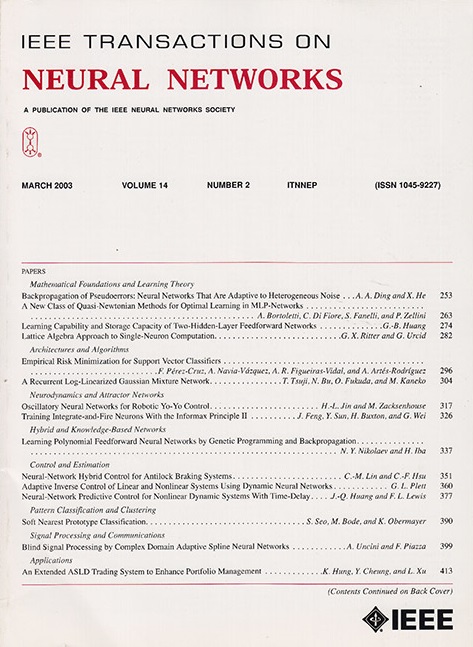HAGNN: Hybrid Aggregation for Heterogeneous Graph Neural Networks
IF 8.9
1区 计算机科学
Q1 COMPUTER SCIENCE, ARTIFICIAL INTELLIGENCE
IEEE transactions on neural networks and learning systems
Pub Date : 2024-12-27
DOI:10.1109/TNNLS.2024.3519427
引用次数: 0
Abstract
Heterogeneous graph neural networks (GNNs) have been successful in handling heterogeneous graphs. In existing heterogeneous GNNs, meta-path plays an essential role. However, recent work pointed out that a simple homogeneous graph model without a meta-path can also achieve comparable results, which calls into question the necessity of a meta-path. In this article, we first present the intrinsic difference between meta-path-based and meta-path-free models, i.e., how to select neighbors for node aggregation. Then, we propose a novel framework to utilize the rich type of semantic information in heterogeneous graphs comprehensively, namely, hybrid aggregation for heterogeneous GNNs (HAGNNs). The core of HAGNN is to leverage the meta-path neighbors and the directly connected neighbors simultaneously for node aggregations. HAGNN divides the overall aggregation process into two phases: meta-path-based intratype aggregation and meta-path-free intertype aggregation. During the intratype aggregation phase, we propose a new data structure called a fused meta-path graph and perform structural semantic aware aggregation on it. Finally, we combine the embeddings generated by each phase. Compared with existing heterogeneous GNN models, HAGNN can take full advantage of the heterogeneity in heterogeneous graphs. Extensive experimental results on node classification, node clustering, and link prediction tasks show that HAGNN outperforms the existing modes, demonstrating the effectiveness and efficiency of HAGNN.HAGNN:异构图神经网络的混合聚合
异构图神经网络(gnn)在处理异构图方面取得了成功。在现有的异构gnn中,元路径起着至关重要的作用。然而,最近的研究指出,没有元路径的简单同构图模型也可以获得类似的结果,这就对元路径的必要性提出了质疑。在本文中,我们首先介绍了基于元路径和无元路径模型之间的本质区别,即如何选择邻居进行节点聚合。然后,我们提出了一种新的框架来综合利用异构图中丰富类型的语义信息,即异构gnn的混合聚合(hagnn)。HAGNN的核心是同时利用元路径邻居和直连邻居进行节点聚合。HAGNN将整个聚合过程分为两个阶段:基于元路径的类型内聚合和不基于元路径的类型间聚合。在类型内聚合阶段,我们提出了一种新的数据结构,称为融合元路径图,并对其进行结构化语义感知聚合。最后,我们将每个阶段生成的嵌入组合起来。与现有的异构GNN模型相比,HAGNN可以充分利用异构图的异质性。在节点分类、节点聚类和链路预测任务上的大量实验结果表明,HAGNN优于现有模式,证明了HAGNN的有效性和高效性。
本文章由计算机程序翻译,如有差异,请以英文原文为准。
求助全文
约1分钟内获得全文
求助全文
来源期刊

IEEE transactions on neural networks and learning systems
COMPUTER SCIENCE, ARTIFICIAL INTELLIGENCE-COMPUTER SCIENCE, HARDWARE & ARCHITECTURE
CiteScore
23.80
自引率
9.60%
发文量
2102
审稿时长
3-8 weeks
期刊介绍:
The focus of IEEE Transactions on Neural Networks and Learning Systems is to present scholarly articles discussing the theory, design, and applications of neural networks as well as other learning systems. The journal primarily highlights technical and scientific research in this domain.
 求助内容:
求助内容: 应助结果提醒方式:
应助结果提醒方式:


